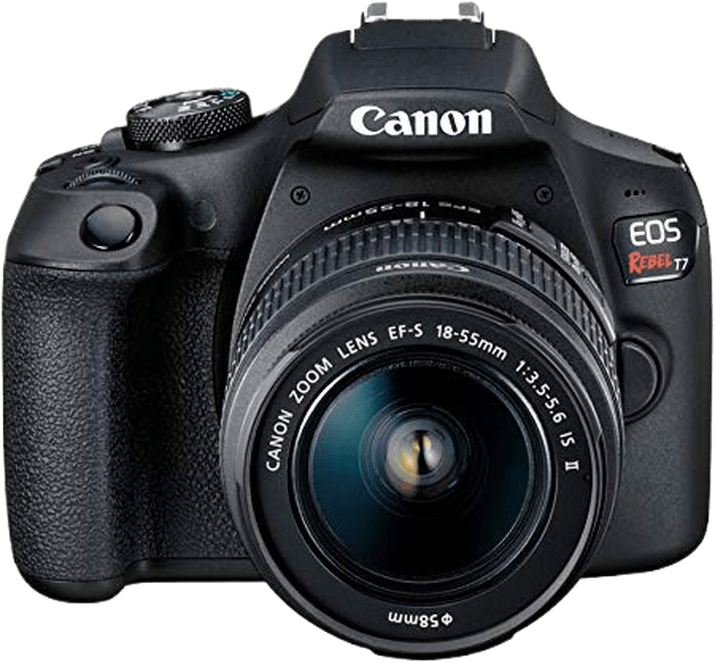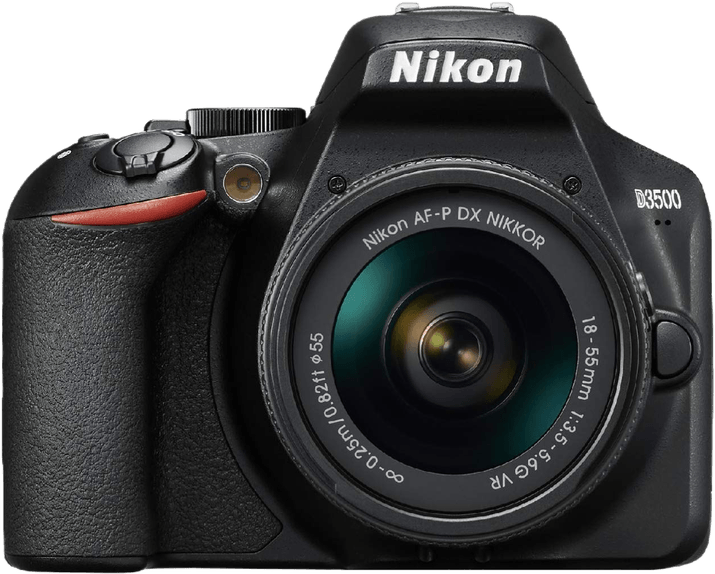Canon EOS Rebel T7 / 2000D vs Nikon D3500 Comparison
Canon EOS Rebel T7 / 2000D

Nikon D3500

The Nikon D3500 outperforms the Canon EOS Rebel T7 / 2000D with a score of 61/100, compared to the latter’s 50/100. Both cameras are DSLR models released in 2018, with the Canon priced at $550 and the Nikon at $499.95. They share similar dimensions, with the Canon measuring 129 x 101 x 78mm and the Nikon at 124 x 97 x 70mm. However, the Nikon D3500 is lighter, weighing 615g (1.36lbs), while the Canon EOS Rebel T7 / 2000D weighs 660g (1.46lbs).
The Nikon D3500’s higher score shows it as a better camera, offering more value for money at a lower price, and its lighter weight makes it more convenient to carry. On the other hand, the Canon EOS Rebel T7 / 2000D still has its merits, although its higher price and lower score make it less attractive than its competitor.
Considering the differences in scores, prices, and weights, the Nikon D3500 is the superior option for those seeking a DSLR camera in this comparison.
Canon EOS Rebel T7 / 2000D vs Nikon D3500 Overview and Optics
The Nikon D3500 wins the optics comparison with a score of 65/100, while the Canon EOS Rebel T7 / 2000D scores 56/100. Both cameras share several specifications, such as 24 megapixels, a CMOS sensor, APS-C sensor size, and no image stabilization. They also have different lens mounts, with the Canon having an EF-S mount and the Nikon featuring an F mount.
The Nikon D3500 outperforms the Canon T7 in several aspects. The D3500 has a faster shooting speed of 5 frames per second compared to the T7’s 3 frames per second, allowing for better action photography. Additionally, the D3500’s Expeed 4 processor is more advanced than the T7’s Digic 4+ processor, providing improved performance. The most significant advantage of the D3500 is its DXOMARK sensor score of 87, which is notably higher than the T7’s score of 71. This difference indicates superior image quality in the Nikon D3500.
The Canon T7, however, has a slight advantage in megapixels, with 24.1 compared to the D3500’s 24. This small difference may not be noticeable in everyday photography but could be beneficial for large prints or heavy cropping.
Considering these factors, the Nikon D3500 is the better choice for photographers seeking superior image quality and performance. The Canon T7’s minor advantage in megapixels does not outweigh the D3500’s overall better optics and processing capabilities.
Canon EOS Rebel T7 / 2000D vs Nikon D3500 Video Performance
The Nikon D3500 outperforms the Canon EOS Rebel T7 / 2000D in video capabilities, scoring 56/100 compared to the Canon’s 43/100. Both cameras offer Full HD video resolution, with maximum dimensions of 1920 x 1080 pixels. Neither camera has built-in time-lapse functionality.
The Nikon D3500’s superiority in video capabilities comes from its higher maximum video frame rate of 60fps, which is double the Canon T7’s 30fps maximum. This higher frame rate allows for smoother video playback and better slow-motion effects in post-production. The D3500’s increased frame rate contributes to its overall higher video score.
The Canon T7 / 2000D does not have any specific video features that outshine the Nikon D3500. Its maximum video frame rate of 30fps is the standard for many entry-level DSLR cameras, but it falls short in comparison to the Nikon D3500’s 60fps.
Considering the video capabilities of both cameras, the Nikon D3500 is the better option for those prioritizing video recording. Its higher video score and smoother frame rate make it a more suitable choice for capturing quality videos. The Canon EOS Rebel T7 / 2000D, while still capable of recording Full HD video, does not offer any advantages in this aspect over the Nikon D3500.
Canon EOS Rebel T7 / 2000D vs Nikon D3500 Features and Benefits
The Nikon D3500 emerges as the winner in the features comparison, scoring 54/100, while the Canon EOS Rebel T7 / 2000D lags behind with a score of 41/100. Both cameras share certain specifications, such as a 3-inch screen size and the absence of a touchscreen, GPS, and Wi-Fi connectivity.
The Nikon D3500 has a slightly better screen resolution of 921,600 dots compared to the Canon T7’s 920,000 dots. Additionally, the D3500 has Bluetooth capabilities, making it easier to connect and transfer files to compatible devices.
On the other hand, the Canon T7 has its own advantages. It features a flip screen, which is useful for capturing images at various angles and for shooting video content. Furthermore, the T7 has Wi-Fi connectivity, allowing for easy sharing and remote control through a compatible smartphone or tablet.
Considering these points, the Nikon D3500 provides a marginally better screen resolution and Bluetooth connectivity, making it the better camera in terms of features. However, the Canon T7’s flip screen and Wi-Fi capabilities make it a strong contender, especially for users who prioritize flexible shooting options and ease of sharing. Ultimately, the choice between the two cameras depends on individual preferences and the specific features that matter most to the user.
Canon EOS Rebel T7 / 2000D vs Nikon D3500 Storage and Battery
The Nikon D3500 outperforms the Canon EOS Rebel T7 / 2000D in storage and battery, scoring 48/100, while the Canon scores 27/100. Both cameras have one memory card slot and accept SD, SDHC, and SDXC cards. Neither camera supports USB charging.
The Nikon D3500’s advantage lies in its battery life, offering 1550 shots per charge, using the EN-EL14a battery. In contrast, the Canon T7 / 2000D provides 500 shots per charge with its LP-E10 battery. This considerable difference makes the Nikon D3500 a more reliable choice for extended shooting sessions.
However, the Canon T7 / 2000D does not have any advantages over the Nikon D3500 in terms of storage and battery specifications.
Considering the significant difference in battery life and the absence of any advantages for the Canon T7 / 2000D, the Nikon D3500 is the superior choice in this aspect.
Canon EOS Rebel T7 / 2000D vs Nikon D3500 Alternatives
Still not sure which camera is right for you? These related camera comparisons may inspire you:
